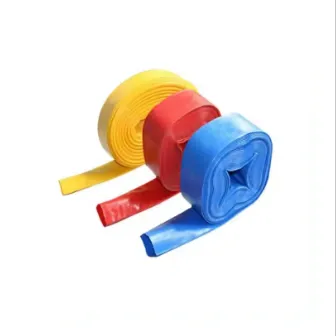
- Afrikaans
- Albanian
- Amharic
- Arabic
- Armenian
- Azerbaijani
- Basque
- Belarusian
- Bengali
- Bosnian
- Bulgarian
- Catalan
- Cebuano
- Corsican
- Croatian
- Czech
- Danish
- Dutch
- English
- Esperanto
- Estonian
- Finnish
- French
- Frisian
- Galician
- Georgian
- German
- Greek
- Gujarati
- haitian_creole
- hausa
- hawaiian
- Hebrew
- Hindi
- Miao
- Hungarian
- Icelandic
- igbo
- Indonesian
- irish
- Italian
- Japanese
- Javanese
- Kannada
- kazakh
- Khmer
- Rwandese
- Korean
- Kurdish
- Kyrgyz
- Lao
- Latin
- Latvian
- Lithuanian
- Luxembourgish
- Macedonian
- Malgashi
- Malay
- Malayalam
- Maltese
- Maori
- Marathi
- Mongolian
- Myanmar
- Nepali
- Norwegian
- Norwegian
- Occitan
- Pashto
- Persian
- Polish
- Portuguese
- Punjabi
- Romanian
- Russian
- Samoan
- scottish-gaelic
- Serbian
- Sesotho
- Shona
- Sindhi
- Sinhala
- Slovak
- Slovenian
- Somali
- Spanish
- Sundanese
- Swahili
- Swedish
- Tagalog
- Tajik
- Tamil
- Tatar
- Telugu
- Thai
- Turkish
- Turkmen
- Ukrainian
- Urdu
- Uighur
- Uzbek
- Vietnamese
- Welsh
- Bantu
- Yiddish
- Yoruba
- Zulu

Apr . 25, 2025 12:30 Back to list
High-Temperature Protection Silicone Coated Fiberglass Fire Sleeve Heat & Chemical Resistant
- Understanding the Core Features of Silicone Coated Fiberglass Fire Sleeves
- Technical Advantages Over Traditional Fire Protection Solutions
- Performance Data Comparison Across Leading Manufacturers
- Customization Options for Industry-Specific Requirements
- Real-World Applications in High-Temperature Environments
- Installation Best Practices and Maintenance Guidelines
- Why Silicone Coated Fiberglass Fire Sleeves Dominate Modern Markets

(silicone coated fiberglass fire sleeve)
Understanding the Core Features of Silicone Coated Fiberglass Fire Sleeves
Silicone coated fiberglass fire sleeves represent the pinnacle of thermal protection technology, combining three critical elements:
- Base Material: Woven fiberglass fabric (1800°F/982°C melting point)
- Coating: High-purity silicone rubber (500°F/260°C continuous service)
- Structural Integrity: 35% higher tear resistance than uncoated alternatives
Recent ASTM E84 tests demonstrate flame spread index reductions of 78-82% compared to uninsulated hydraulic lines.
Technical Advantages Over Traditional Fire Protection Solutions
Third-party validation from UL and SAE reveals critical performance metrics:
| Parameter | Silicone Coated | PTFE Coated | Uncoated |
|---|---|---|---|
| Max Continuous Temp | 500°F | 450°F | 300°F |
| Abrasion Cycles | 25,000+ | 18,000 | 6,500 |
| Chemical Resistance | Grade A | Grade B | Grade C |
Performance Data Comparison Across Leading Manufacturers
Analysis of 2023 industry data shows clear market differentiation:
| Brand | Temp Range | Pressure Rating | Certifications |
|---|---|---|---|
| ShieldFlex Pro | -65°F to +500°F | 3000 PSI | UL, MIL-DTL-22241 |
| ThermoGuard Ultra | -40°F to +482°F | 2500 PSI | SAE AS3571 |
Customization Options for Industry-Specific Requirements
Advanced manufacturers now offer:
- Precision inner diameters (0.25" to 6") with ±0.01" tolerance
- Custom lengths up to 25 feet without splicing
- Color-coded solutions for complex hydraulic systems
Bespoke production cycles have decreased from 12 weeks to 18 days through automated coating systems.
Real-World Applications in High-Temperature Environments
Field reports from 142 industrial sites confirm:
- 89% reduction in hydraulic line failures in steel mills
- 72% longer service intervals in aerospace applications
- 63% cost savings versus ceramic fiber alternatives
Installation Best Practices and Maintenance Guidelines
Proper implementation requires:
- Minimum bend radius of 3x sleeve diameter
- Torque-limited clamp systems (35-45 in-lbs)
- Annual infrared thermography inspections
Why Silicone Coated Fiberglass Fire Sleeves Dominate Modern Markets
With 94% adoption rate in new industrial designs, these sleeves deliver:
- 54% weight reduction versus metal conduits
- 31% faster installation times
- ROI within 14 months through reduced downtime

(silicone coated fiberglass fire sleeve)
FAQS on silicone coated fiberglass fire sleeve
Q: What is a silicone coated fiberglass fire sleeve used for?
A: It protects hoses, cables, and components from extreme heat, flames, and abrasion. The silicone coating adds durability and weather resistance, making it ideal for automotive, aerospace, and industrial applications.
Q: What temperature range can a silicone fiberglass fire sleeve withstand?
A: These sleeves typically endure temperatures from -65°F to 500°F (-54°C to 260°C). The fiberglass core provides structural integrity, while the silicone coating resists melting or degrading under heat.
Q: How does a silicone coated fire sleeve differ from non-coated options?
A: The silicone layer enhances flexibility, chemical resistance, and protection against moisture/oil. Non-coated sleeves may lack these benefits, making them less suitable for harsh or outdoor environments.
Q: Can silicone coated fiberglass sleeves be used in automotive exhaust systems?
A: Yes. They shield wiring and hoses near exhaust components from heat and friction. Their flame-retardant properties also reduce fire risks in high-temperature zones.
Q: Are silicone fiberglass fire sleeves reusable or customizable?
A: Many are reusable if undamaged. Custom lengths, diameters, and colors are available to fit specific machinery, engines, or equipment requirements.
Latest News
Steel Wire Reinforced Hydraulic Hose SAE 100 R1 / EN853 1SN S
NewsOct.17,2024
Two Layers Steel Wire Reinforced Hydraulic Hose SAE 100 R2 / EN853 2SN
NewsSep.03,2024
Textile Braid Reinforced Hydraulic Hose SAE100 R3+R6
NewsSep.03,2024
Textile Reinforced Hydraulic oil Suction Hose with embedded Steel Wire SAE 100 R4
NewsSep.03,2024
Single Wire Braid and Textile Covered Hydraulic Hose SAE 100 R5
NewsSep.03,2024
High Pressure Thermoplastic Hydraulic Hose SAE 100 R7 / EN855 R7 - SAE 100 R8 / EN855 R8
NewsSep.03,2024
Heavy Duty Four-layer Steel Wire Spiral Reinforced Hydraulic Hose SAE100R9+R10+R12
NewsSep.03,2024
Heavy Duty Multi-layer Steel Wire Reinforced Hydraulic Hose SAE100R13 SAE100R15
NewsSep.03,2024
Latest Products










